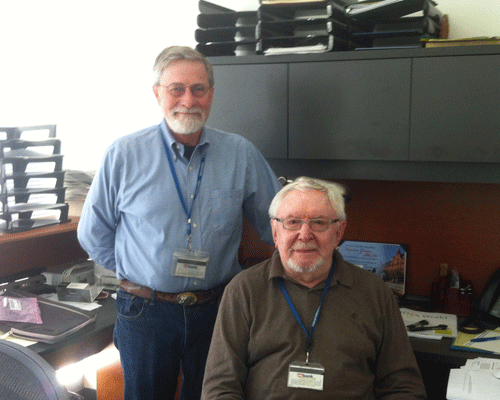Virologists harness adenovirus to kill breast cancer cells

With a $40,250 grant from the Lottie Caroline Hardy Charitable Trust Fund, researchers at Saint Louis University's Institute for Molecular Virology will study a small fragment of adenovirus as a possible future therapy for HER2 breast cancer.
Breast cancer is the most common cancer affecting women. Despite major advances, it is still the leading cause of death from cancer in women. The HER2 oncogene is implicated in 20 to 30 percent of breast cancers and has a poor prognosis. Current therapy for HER2 cancers (Herceptin and chemotherapy) is not enough to combat this deadly cancer and cannot treat a substantial number of cases.
The adenovirus is a common virus, and researcher Maurice Green, Ph.D., chair of SLU's Institute for Molecular Virology, has studied it for years. He hopes to tame the virus's abilities to kill cancer cells in order to use it as a therapy.
"It's been an ambition of mine for a long time," Green said. "Long ago, I was stationed in the Philippines, and I had nothing to do but read about medicine and that's where my interest started."
Dedicating his career to the study of virology, Green was a pioneer in using viruses to probe the functions of normal cells and to understand how cancer works on the molecular level. Green chose the adenovirus as a focus of study and he and his lab developed the first working model of the virus.
Now, Green and colleague Paul Loewenstein, assistant research professor in the department, have found that a small region of the E1A protein, an adenovirus gene, is capable of repressing HER2 cell growth.
Significantly, this function appears to be controlled by the first 80 amino acids (E1A 1-80) of the entire E1A oncogene.
This is a promising finding, because it means that researchers can focus on this small region of the adenovirus without delving into the rest of the E1A oncogene, which has other functions.
Remarkably, the expression of these 80 amino acids efficiently represses HER2 transcription and kills breast cancer cells but not normal cells.
"This is probably due to the need of the tumor cells for continued overexpression of the HER2 oncogene for growth and survival. This phenomenon has been termed 'oncogene addiction,'" Green said.
One of the exciting possibilities of E1A 1-80 is that it seems to be effective against cancer cells over-expressing other HER family members, besides HER2. Potentially, E1A 1-80 could be used against tumors of the prostate, ovaries, colon, and head and neck, as well as breast cancer.
With this grant, Green and Loewenstein want to develop a strong E1A 1-80 HER2 repressor that may someday be added to Herceptin therapy. Their work will include animal model studies to further demonstrate the potential of E1A 1-80 as a therapy.
And, Green sees particular promise in this gene therapy because it seems to kill not only tumor cells, but targets their origins, as well.















